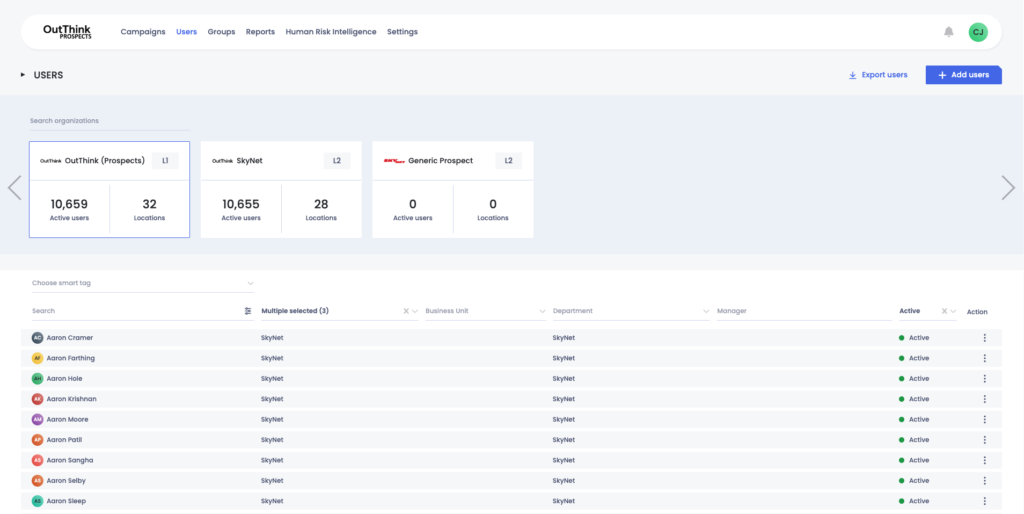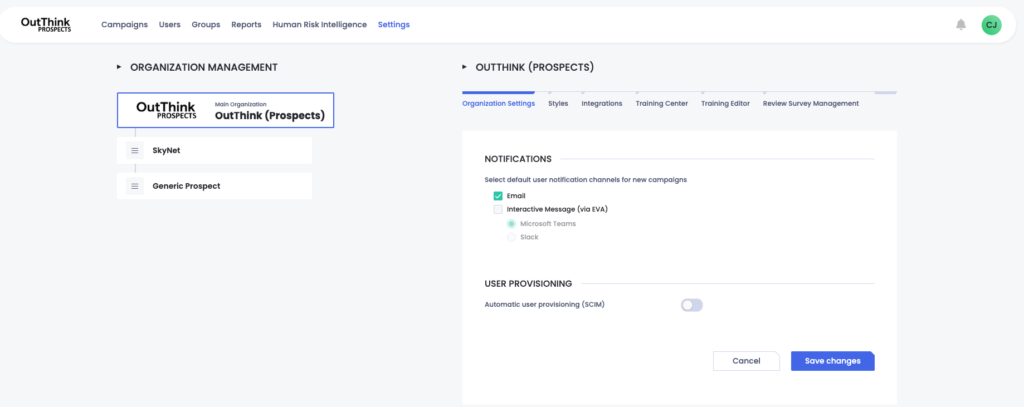OutThink sub-organizations can be used to reflect your organizational hierarchy, such as your business entities. Users are grouped into sub-organizations within the organizational tree, and administrators can be provisioned and given permissions to specific sub-organizations only. There is no limit to the number of sub-organizational levels that can be created.
Sub-organizations of the parent organization should be used to:
- Easily divide users into segments when sending campaigns or analyzing results.
- Provide administrative access to only certain groups of users, with the purpose of creating campaigns for those users and analysing their specific results only.
During your technical kick-off call, your OutThink Customer Success Manager will work with you to define the organizational structure you need to use. Administrators who can administer campaigns to all users should be added to the L1 top organizational level. They can create campaigns across the whole organization, or for individual sub-organizations.
Administrators added at the L2 second organizational level can only create campaigns and review the results of users within their sub-organization, including those level n sub-organizations which sit under their specific sub-organization. They cannot create campaigns for other L2 level organizations. The same principles apply as you move down the organizational tree structure.
Top-level L1 administrators can view each of the organizations defined, and their associated users, via the Users menu. Clicking on a specific organization updates the user list to show only the related employees. Other level administrators can only see their sub-organization and subsequent tree in this view.

Administrators can also view how the organizational structure is defined for their organization through the Organizational Settings in the Settings menu:
